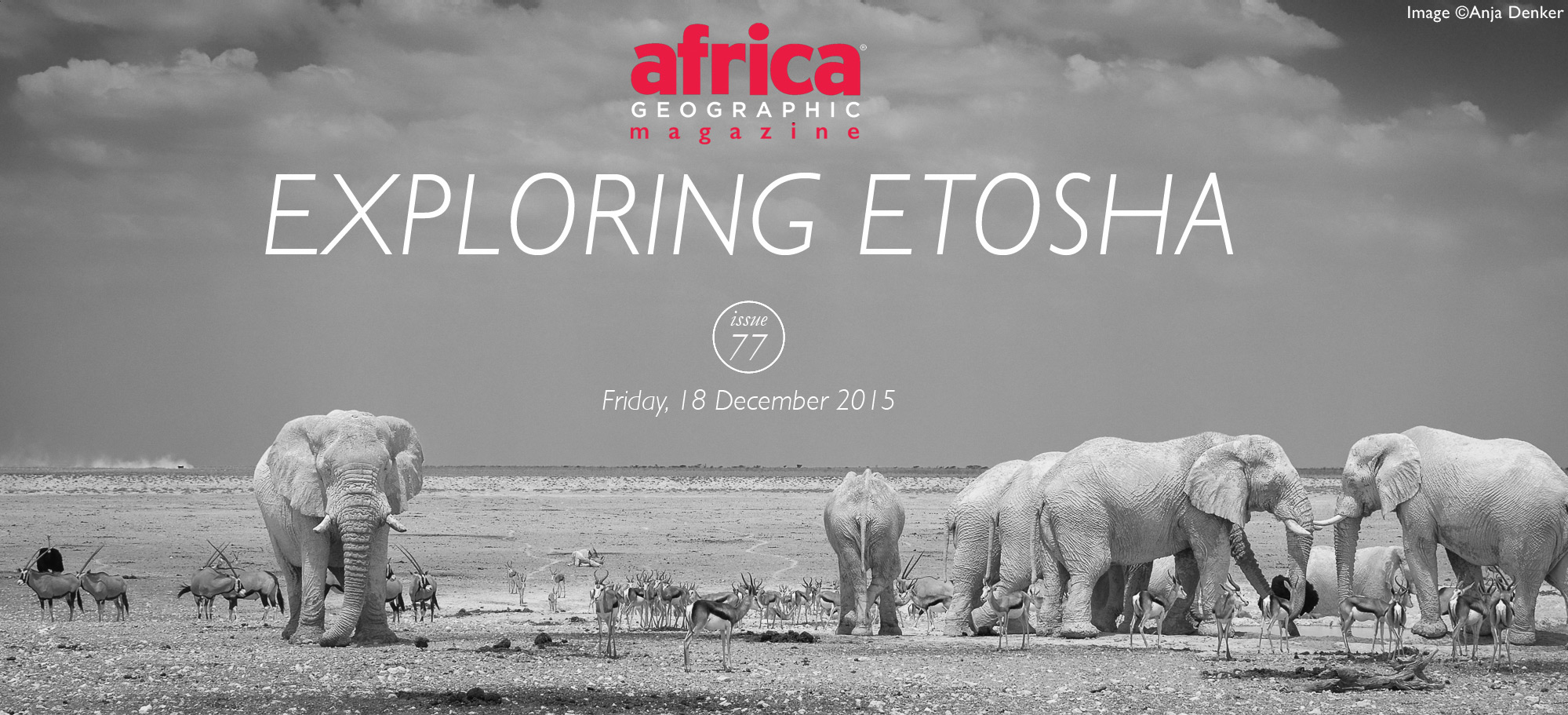

I enter a barren land where white clay meets an ice-blue sky. The ‘Great White Place’ gives new meaning to ‘bone dry’. At the end of a ruthless dry spell, the land is crying out for the taste of rain, but there are no signs of a storm brewing. Africa is renowned for its big skies, and never more so than at Etosha National Park.
On the ground, primal energy rules. The awkward stoop of thirsty, drinking giraffes makes them easy prey for Etosha’s lions, and bones lie scattered around the waterhole. Hyenas, jackals and vultures are queuing up for their turn at the buffet, that is, if the lions leave anything behind.


A young kudu bleats, stuck up to its shoulders in the middle of the shrinking waterhole. A hyena looks on, sensing easy prey, while the kudu’s father stands watch with his snaking horns, and a skinny warthog tentatively drinks nearby. The young kudu makes it out safely, the hyena skulks away, and I, too, move on past the Etosha Pan, which is so large that it can be seen from outer space.
There is no car in sight, and I could be forgiven for thinking that I own the land, until a stubborn rhino lets me know that he does. I understand my place and pay my respects to Namibia’s national animal as an oryx ambles past, followed by elephants of varying shades, from ivory white to ebony black, depending on which waterhole they decided to bathe in.
Members of a mongoose family go about their business, while a lazy few lie flat in the shade of a cool termite mound, and a hyena drags around a zebra skin, her rotund belly scraping the ground.
A wildlife haven that represents raw Africa
This is Etosha National Park – a unique reserve in Namibia, home to a 100-million-year-old salt pan and a turbulent history, remembered on the monuments throughout the park’s rest camps. It is a photographer’s dream come true, a birder’s delight, a wildlife haven and a place that, for me, represents raw Africa.
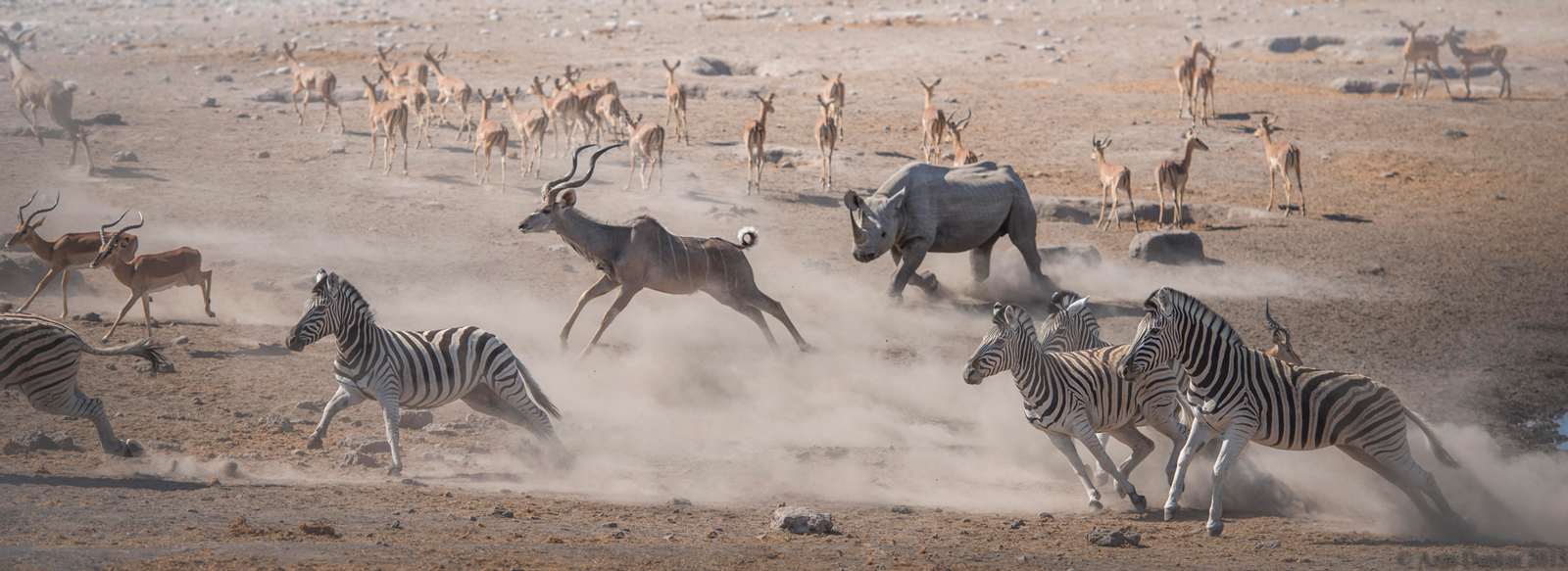
What to see and how to see it

The ‘white elephants’ that garner their colour from the clay of the salt pan, which acts as a form of sunscreen and which they liberally smear over their bodies to cool down, should be at the top of anyone’s Etosha bucket list. The best place to catch a glimpse of one of these famous ‘ghosts’ is at Nebrownii waterhole, where that iconic Etosha scene will unfold before your eyes with ostriches, springbok, zebra, gemsbok, giraffe, wildebeest and zebra all congregating for their share of the life-giving waters.
If you are visiting during the dry season, it is best to hunker down at one of the many waterholes – including natural springs and man-made boreholes – and wait to see what comes for a visit. The stretch covering the Sueda, Salvadora and Rietfontein waterholes provides a wealth of sightings, and we were lucky to see two lionesses with their cubs on this stretch of road.
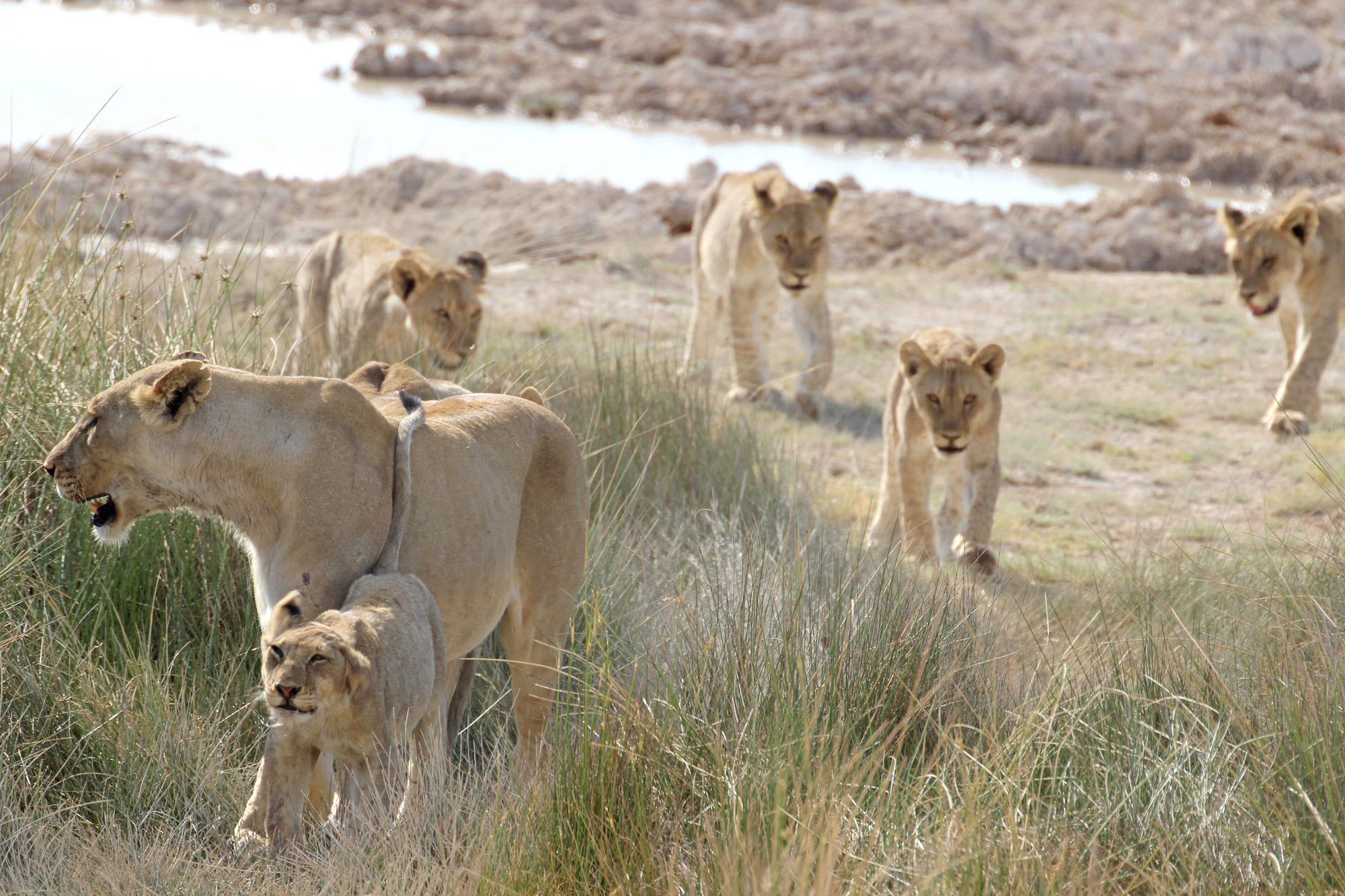
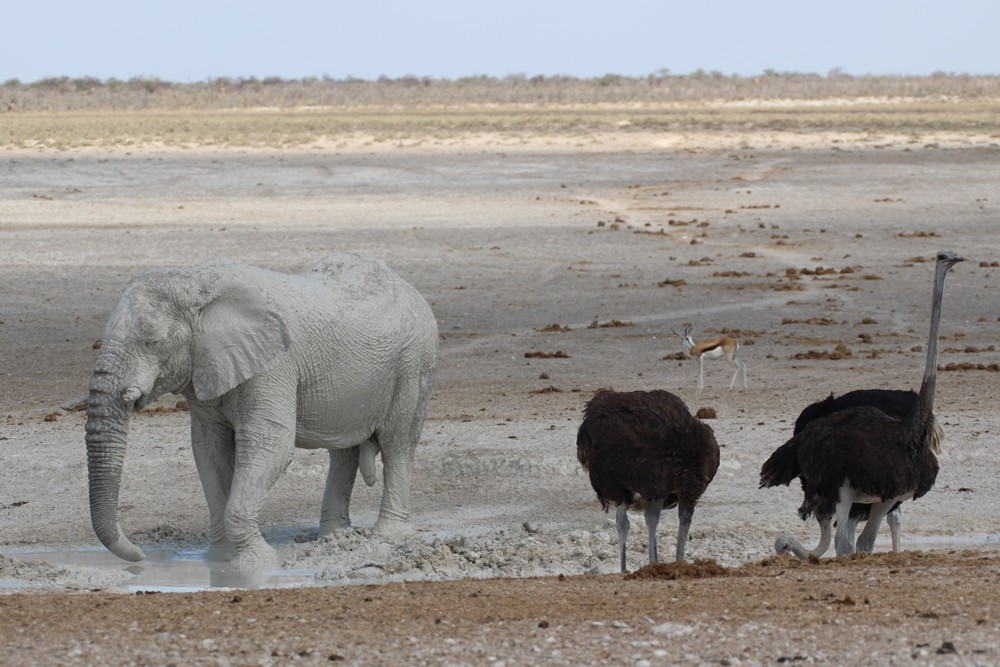
Chudob was another winning choice for our trip, as it was situated within easy reach of the Von Lindequist Gate and our accommodation at Mokuti Etosha Lodge, located just outside the national park. Here, we could watch the wildlife come and go as the sun set in the background, while still having enough time to make it to the gate before closing.
The man-made Halali waterhole, situated at Halali Rest Camp, is a great place to sit with a sundowner or a snack and a pair of binoculars. But be careful not to leave your food unattended, as a pair of honey badgers is known to go after anything they can!
If you’re a birder, you’ll find Fisher’s Pan an absolute delight during the rainy season when the pan welcomes thousands of flamingoes and other wetland birds and migratory species.
The plains between Halali and Okaukuejo camps are a great place to spot smaller creatures such as the bat-eared fox. At the same time, the western side of Etosha has recently opened to the public and offers a different landscape, thanks to its red soil and undulating terrain. On this side of the park, you will find Hartmann’s mountain zebra, black rhino and black-faced impala.
Before visiting the park, it is essential to note the fees based on your nationality and vehicle type. These fees are paid at the camps within the park, and proof of payment must be presented upon exiting.
It is also essential to respect the park’s opening and closing times, which are based on sunrise and sunset and change with the seasons.
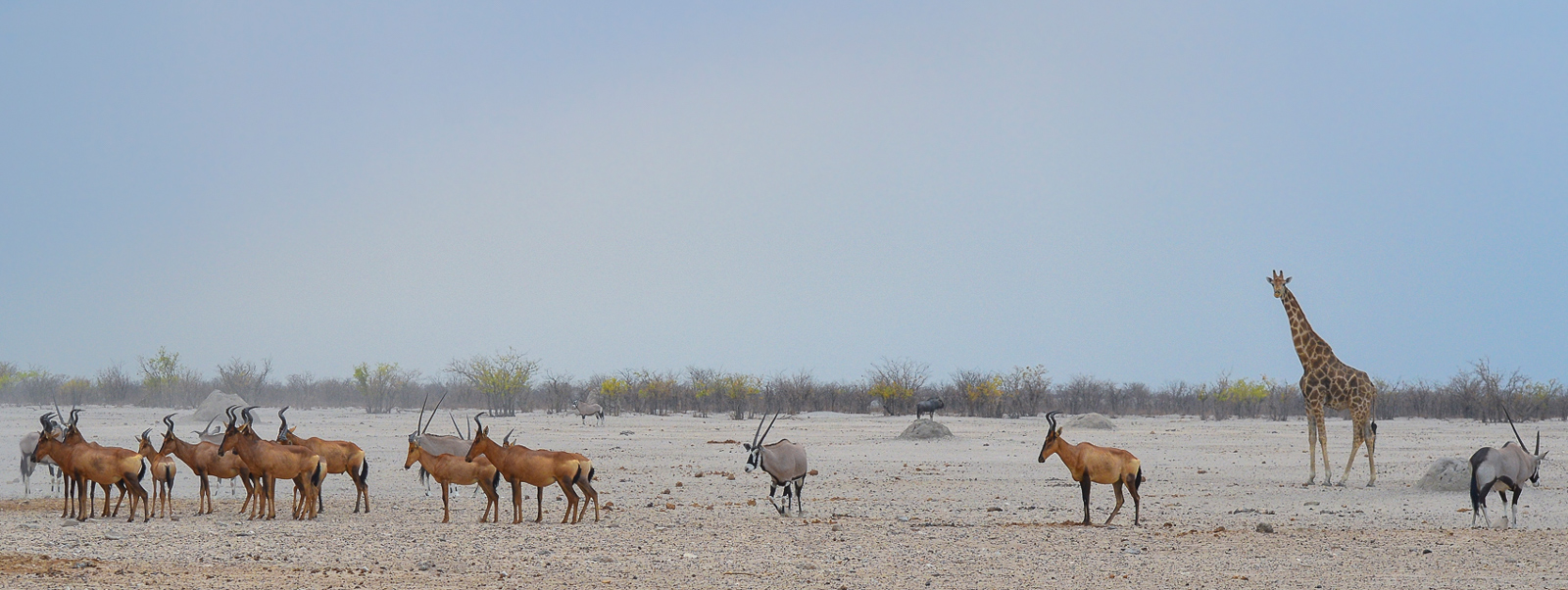
When to go
Winter: May to October is the dry season, when Etosha sees the most action as wildlife congregates around the waterholes. This is the busiest season for visitors, thanks to excellent visibility for sightings and mild weather. I visited the park in November, at the end of the dry season in the region, but it had still not seen any rain. While waterholes were low, the game looked healthy. However, there was little game to be seen between these sources.
Summer: January and February are the height of the rainy season. In these months, Etosha’s usually dry salt pan is transformed into an exquisite birder’s haven, home to thousands of flamingos and migratory birds. The European bee-eater is a particular delight! However, it is harder to guarantee game sightings during this quieter period, as the animals do not need to visit the waterholes. Consequently, more driving is necessary, and you can expect daytime temperatures to reach up to 40°C.
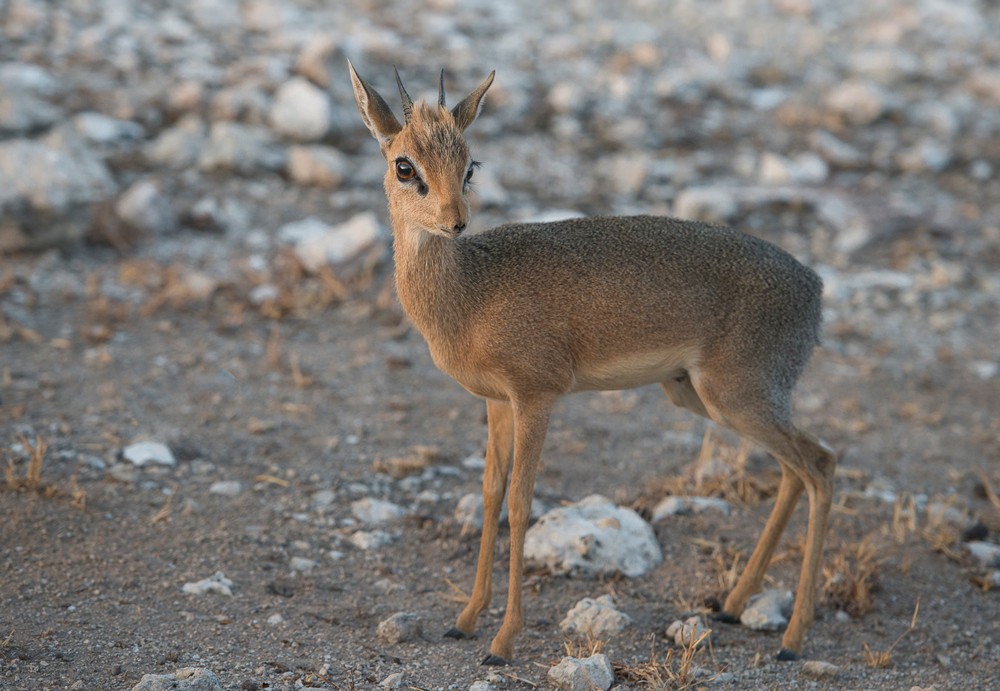
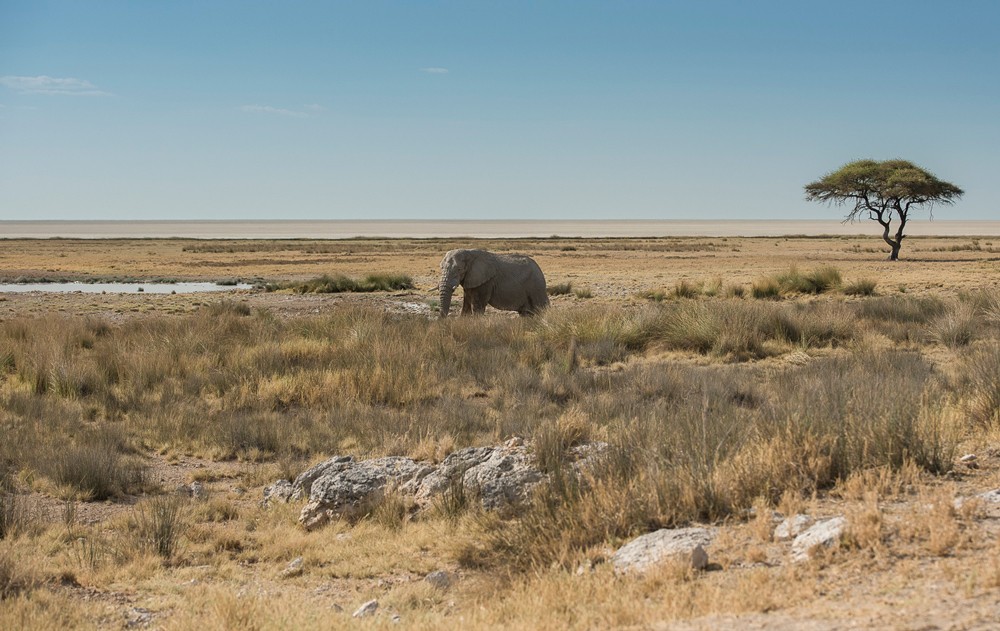
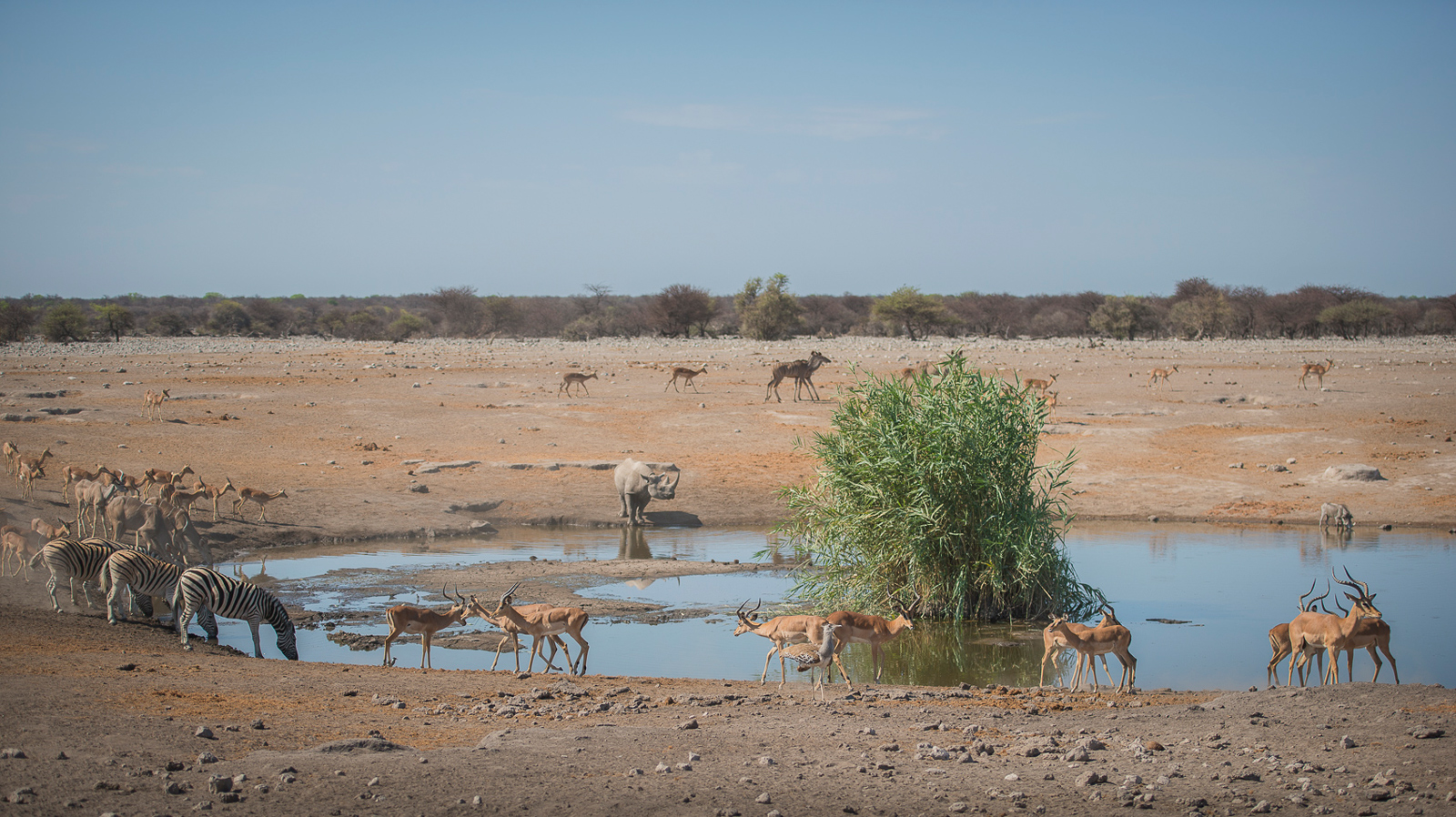
I broke the journey into two parts by stopping at Okonjima, home of the AfriCat Foundation, on the way up. At Okonjima, various accommodation options are available, from camping to your private bush villa. Money raised from their lodgings supports the work of AfriCat, which focuses on the conservation of Namibia’s large carnivores, conservation education, and the mitigation of human-wildlife conflict. AfriCat also has another base on the south-western border of Etosha, aiming to mitigate conflict between local farmers and lions. Okonjima is currently home to leopards, lions, hyenas and wild dogs – many of which have been rescued, while some are natural residents of the reserve. These carnivores, which may otherwise have been confined to a life in captivity, can become self-sustaining in Okonjima’s protected area. And I managed to tick three of Namibia’s big cats off my list before I even reached Etosha. This was great as it meant that I wasn’t so focused on predator sightings during my time in the national park. The shorter drive also meant that I had time to enter the park through Anderson Gate and spend the rest of the day driving to exit at Von Lindequist Gate near Namutoni, where Mokuti Etosha Lodge was awaiting my arrival.
 Find your ready-made Etosha safari, or ask us to build one just for you.
Find your ready-made Etosha safari, or ask us to build one just for you.

To comment on this story: Login (or sign up) to our app here - it's a troll-free safe place 🙂.![]()




